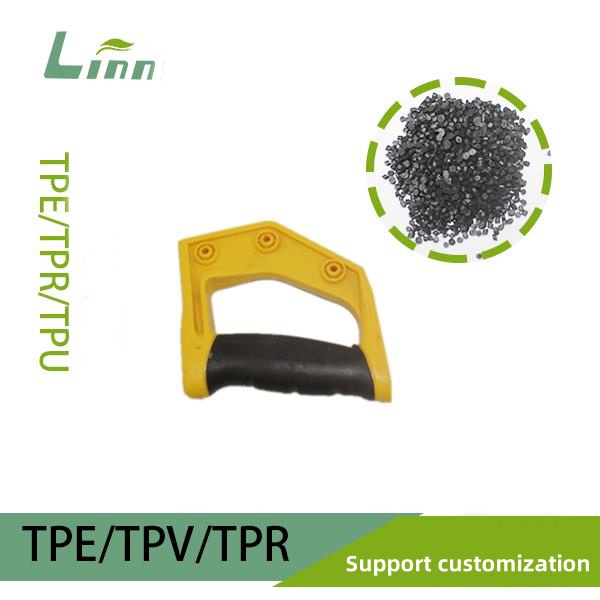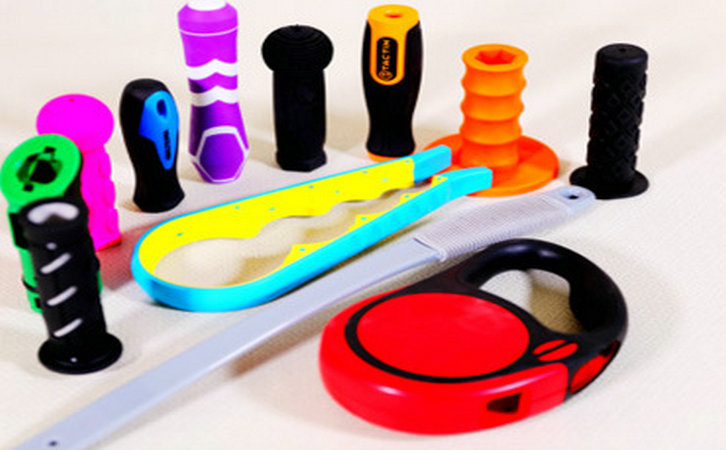Having spent years working with thermoplastic elastomers (TPR) in industries like footwear, automotive, and consumer goods, I’ve seen firsthand how the choice of raw materials can make or break a product. TPR, or thermoplastic rubber, is prized for its versatility, combining the elasticity of rubber with the processability of plastics. But what exactly goes into making TPR? When someone asks about the raw materials for TPR elastomers, they’re likely looking to understand the building blocks that define its properties, whether they’re troubleshooting a formulation issue or designing a new product. In this article, I’ll break down the key raw materials used in TPR production, drawing on my experience to provide practical insights and actionable advice. My goal is to help you navigate the complexities of TPR formulations with clarity and confidence.
What Are TPR Elastomers?
Before diving into the raw materials, let’s clarify what TPR elastomers are. TPR is a class of materials that exhibit rubber-like elasticity but can be processed like thermoplastics, making them ideal for injection molding, extrusion, and other manufacturing techniques. Their properties—such as hardness, flexibility, and durability—depend heavily on the raw materials used. These materials are blended in precise ratios to achieve the desired performance, and understanding each component is critical to success.
Core Raw Materials for TPR Elastomers
TPR formulations typically involve a combination of polymers, fillers, plasticizers, and additives. Each plays a specific role in determining the material’s final properties. Below, I’ll detail the primary categories of raw materials, their functions, and how they impact TPR performance, with real-world examples from my experience.

1. Base Polymers
The backbone of any TPR formulation is the base polymer, which provides the material’s core structure and elasticity. The most common base polymers for TPR are:
SBS (Styrene-Butadiene-Styrene): A block copolymer widely used in cost-sensitive applications like shoe soles. SBS offers good elasticity and flexibility but has lower heat resistance compared to other options. I once worked with a footwear manufacturer who used SBS-based TPR for budget-friendly sneakers, achieving a Shore A hardness of 60-70.
SEBS (Styrene-Ethylene-Butylene-Styrene): A hydrogenated version of SBS, SEBS provides superior weather resistance, UV stability, and heat resistance, making it ideal for outdoor applications like seals or grips. In a project for an automotive supplier, we switched to SEBS-based TPR for door seals to improve durability under harsh weather conditions.
TPU (Thermoplastic Polyurethane): Less common but used in high-performance TPR formulations, TPU offers excellent abrasion resistance and toughness. It’s often chosen for premium shoe soles or industrial components.
TPE-O (Olefinic Thermoplastic Elastomers): These are based on polypropylene or polyethylene blends, offering good chemical resistance and low cost. They’re often used in applications like toys or household goods.
Key Considerations:
SBS is cost-effective but less durable in harsh environments.
SEBS is pricier but excels in demanding applications.
The choice of base polymer depends on the product’s end-use, such as flexibility for shoe soles or chemical resistance for seals.
2. Plasticizers (Filler Oils)
Plasticizers, often referred to as filler oils, are added to soften the base polymer, adjust hardness, and improve processability. The most common plasticizers in TPR include:
Paraffinic Oils: These are widely used due to their compatibility with SBS and SEBS. They provide good flexibility and are cost-effective. In a project for a toy manufacturer, we used paraffinic oil to achieve a soft, rubbery texture for TPR figurines.
Naphthenic Oils: These offer better compatibility with certain polymers and are used when higher clarity or low-temperature flexibility is needed.
Aromatic Oils: Less common due to potential health concerns, but they can be used in specific industrial applications for enhanced compatibility with SBS.
Key Considerations:
The oil-to-polymer ratio (e.g., 1:1 to 1:2) significantly affects hardness and elasticity. Too much oil can cause oil seepage, leading to sticky surfaces, as I saw in a case where a shoe sole formula had excessive paraffinic oil.
Compatibility is critical—mismatched oils and polymers can lead to phase separation. For example, paraffinic oils work well with SEBS but may not suit TPU-based TPR.

3. Fillers
Fillers are added to reduce costs, enhance mechanical properties, or adjust the material’s appearance. Common fillers include:
Calcium Carbonate (CaCO₃): The most widely used filler due to its low cost and ability to increase stiffness. In a flooring project, we used calcium carbonate to reduce costs while maintaining decent tensile strength.
Talc: Improves stiffness and heat resistance but can reduce flexibility. It’s often used in automotive TPR parts.
Silica: Enhances tear strength and abrasion resistance, ideal for high-performance applications like sports equipment.
Clay: Used in specific formulations for improved surface smoothness and dimensional stability.
Key Considerations:
Fillers must be finely ground and uniformly dispersed to avoid defects like surface roughness.
Excessive filler content can reduce elasticity, so balance is key. I typically recommend keeping filler content below 40% by weight for most TPR applications.
4. Additives
Additives are used to fine-tune TPR properties, enhance processing, or extend service life. Common additives include:
Antioxidants: Prevent thermal or oxidative degradation during processing or use. For example, phenolic antioxidants are often used to extend the lifespan of outdoor TPR products.
UV Stabilizers: Protect against UV-induced degradation, critical for outdoor applications. In a project for garden hose grips, we added UV stabilizers to SEBS-based TPR to prevent cracking after prolonged sun exposure.
Lubricants: Improve flowability and demolding during processing. Stearic acid or silicone-based lubricants are common choices.
Colorants: Pigments or dyes are added for aesthetic purposes. I once helped a client develop vibrant TPR shoe soles using organic pigments to meet branding requirements.
Flame Retardants: Used in applications requiring fire resistance, such as electrical components.
Compatibilizers: Enhance the compatibility between polymers and oils, such as maleic anhydride-grafted SEBS.
Key Considerations:
Additives should be used sparingly to avoid affecting core properties. For instance, excessive antioxidants can alter the material’s odor.
Always test additive interactions to prevent adverse effects, like color bleeding from incompatible pigments.

5. Reinforcing Agents (Optional)
In high-performance TPR formulations, reinforcing agents like carbon black or glass fibers are added to boost strength or stiffness. These are less common in standard TPR but critical for applications like industrial belts or automotive parts.
Key Considerations:
Carbon black improves tensile strength but may darken the material, limiting its use in colored products.
Glass fibers enhance stiffness but can complicate processing due to increased viscosity.
Summary Table of TPR Raw Materials
|
Raw Material Category |
Examples |
Function |
Common Applications |
|---|---|---|---|
|
Base Polymers |
SBS, SEBS, TPU, TPE-O |
Provide elasticity, structure |
Shoe soles, seals, grips, toys |
|
Plasticizers |
Paraffinic, Naphthenic Oils |
Adjust hardness, improve flow |
Soft TPR products, flexible parts |
|
Fillers |
Calcium Carbonate, Talc, Silica |
Reduce cost, enhance stiffness |
Flooring, automotive parts |
|
Additives |
Antioxidants, UV Stabilizers |
Enhance durability, aesthetics |
Outdoor products, colored TPR |
Practical Insights from My Experience
Over the years, I’ve worked on numerous TPR projects, from shoe soles to medical device grips, and the choice of raw materials always comes down to balancing cost, performance, and processability. Here’s a real-world example to illustrate:
A client producing TPR shoe soles faced issues with inconsistent hardness and sticky surfaces. After analyzing their formulation, I found they were using a low-grade paraffinic oil with poor compatibility with their SBS polymer. We switched to a higher-quality paraffinic oil and adjusted the oil-to-SBS ratio from 1:1.8 to 1:1.3. Additionally, we introduced a small amount of calcium carbonate (20% by weight) to improve stiffness without sacrificing flexibility. The result was a stable formula with a consistent Shore A hardness of 65±2, and the sticky surface issue was eliminated.
Another lesson I’ve learned is the importance of testing raw material interactions. In a project for a toy manufacturer, we initially used a low-cost calcium carbonate filler, but it caused surface defects due to poor dispersion. Switching to a finer-grade calcium carbonate and adding a dispersing agent solved the issue, improving both aesthetics and mechanical properties.

How to Choose the Right Raw Materials
Selecting the right raw materials for TPR requires a clear understanding of the product’s requirements. Here are my recommendations based on years of trial and error:
Define Performance Needs: Identify key properties like hardness, elasticity, or UV resistance. For example, use SEBS for outdoor applications and SBS for cost-sensitive indoor products.
Test Compatibility: Conduct small-scale trials to ensure polymers, oils, and additives work well together. Incompatible materials can lead to phase separation or performance loss.
Source Quality Materials: Partner with reputable suppliers to ensure consistent raw material quality. Request technical data sheets and batch test results.
Optimize Ratios: Experiment with polymer-to-oil and filler ratios to achieve the desired balance of cost and performance. For example, a 1:1.5 SBS-to-oil ratio is a good starting point for shoe soles.
Monitor Processing Conditions: Ensure raw materials are suitable for your equipment. For instance, high-viscosity formulations with glass fibers may require specialized extruders.
External Resources for Further Learning
For those looking to dive deeper into TPR raw materials, I recommend checking out technical resources from industry leaders like Kraton for SBS and SEBS polymers or ExxonMobil for plasticizer oils. These sites offer detailed technical data sheets and application guides that can help refine your formulations.
Wrapping Up
Understanding the raw materials for TPR elastomers is the first step to mastering their formulation and application. From base polymers like SBS and SEBS to plasticizers, fillers, and additives, each component plays a critical role in shaping the final product. By carefully selecting and balancing these materials, you can create TPR products that meet performance, cost, and aesthetic goals. My years in the industry have taught me that success lies in attention to detail—testing, tweaking, and staying curious. If you’re working on a TPR project and need guidance, I’m happy to share more insights based on my experience. Let’s keep the conversation going!

Frequently Asked Questions
Q1: What’s the difference between SBS and SEBS in TPR formulations?
A: SBS is cost-effective and offers good elasticity but has lower heat and UV resistance. SEBS, being hydrogenated, provides better weatherability and durability, making it suitable for outdoor or high-performance applications.
Q2: Can I use the same plasticizer for all TPR formulations?
A: No, plasticizers like paraffinic or naphthenic oils must be compatible with the base polymer (e.g., SBS or SEBS). Always test compatibility to avoid issues like oil seepage or phase separation.
Q3: How do fillers affect TPR properties?
A: Fillers like calcium carbonate reduce costs and increase stiffness but can reduce elasticity if overused. Keep filler content below 40% and ensure proper dispersion to avoid defects.
Q4: Are additives always necessary in TPR formulations?
A: Not always, but additives like antioxidants or UV stabilizers are critical for specific applications, such as outdoor products or those requiring long-term durability. Use them based on the product’s needs.





